
Best tools supporting personalized onboarding experience


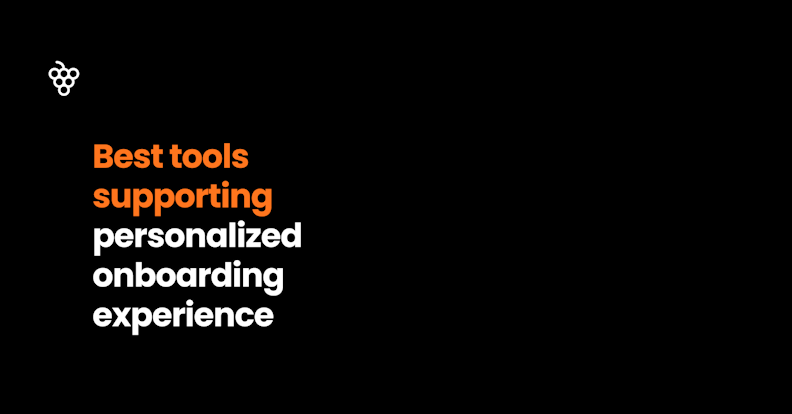
Most new users don’t quit because your product is weak. They quit because they never reach value fast enough. “One-size-fits-all” onboarding throws the same tips and emails at everyone and hopes something sticks. Personalized onboarding does the opposite: it gives each user the next right step based on who they are (role, plan, region), what they’ve already done (events), and what they’re trying to achieve (intent).
Why personalize onboarding - and why think in journeys, not features
It's also important to start looking at onboarding through a user journey lens as it keeps you focused on sequence and timing, not just a bag of tactics. An admin on a Pro plan needs a setup checklist and an SSO guide on day one, versus an end-user needs a 90-second quickstart and a nudge to complete their first task. Same product, different paths. When you line up the right tools along that journey- inside and outside the app - you remove friction, shorten time-to-value (usually so called aha moment), and convert more trials into long-term customers without burning your team.
Watch our video to learn more about finding and leveraging your "Aha moment".
How user onboarding changes when you adopt a journey mindset
Right message, right moment: In-app tips, tours, or emails trigger from real behavior (or lack of it), not a calendar.
- Role- and plan-aware paths: Admins, end-users, and different tiers see different checklists and examples.
- Less noise, more progress: Frequency caps and priorities prevent message pile-ups - users see only what helps now.
- Closed feedback loop: Quick surveys and support signals feed back into what you show next.
- Measure and improve: You can A/B test steps, compare segments, and prove impact on activation and retention.
Delivering the right next step to the right user at the right moment and channel, based on who they are, what they’ve done, and what they’re trying to achieve requires: (1) reliable user & account data, (2) targeting/experimentation, and (3) activation channels in and out of the product, with (4) feedback loops to learn and adapt. You will also need some specialized tools for in-app guidance, lifecycle messaging, contextual help, feedback, learning, and data activation.
The good news is you don’t need to buy everything at once. Start with basics like in-app guidance and lifecycle messaging, then layer sophistication. That is how we have organized this personalized onboarding tools guide - along the user journey and in a way you can build up gradually. So lets start with basics.
Personalized onboarding phase 0: Define identities and value
This is a "homework" you need to do before you start buidling any tours or sending emails - actually, even before you start looking for a product tour software or lifecycle messaging tool. You need to be clear on two things: who your users are and what “value” means for them. Personalization only works when it’s built on these basics. Expect to spend few days to a week or two on this.
Start with simple identities you can use everywhere (product, email, support)
- Role (Admin / Builder / End-user),
- Plan/Tier (Free, Trial, Pro),
- Account context (company, team size, entitlements),
- Locale/time zone, and optionally Device.
Next, define value.
Choose one clear “Aha moment” that shows a new user has gotten real benefit (e.g., connected data, invited a teammate, shipped a first task) - this may differ based on role or plan. Then map the 2–3 steps that usually lead to that Aha. Track only the few events you’ll actually use - roughly 8–12 with plain names.
Baseline two simple KPIs: Aha Rate (i.e. how many reach Aha in 7 days) and Time-to-Aha (how long it takes). If you can, also watch what % of users have role/plan/locale captured.
Keep it lean. Avoid too many roles, personas or vague definitions. With “who” and “value” nailed, every later tactic - checklists, emails, help content, even AI - becomes targeted, measurable, and easier to manage.
Personalized onboarding phase 1: In-product quick wins
Turn your Phase 0 basics into small, helpful nudges inside the product. Keep it simple: help each role reach value faster with the least number of steps.
Start with three elements: a short, role-aware checklist (3–5 items), one guided walkthrough of the core path, and smart empty states that show what to do next. Target them with basic rules (role, plan, hasn’t done X yet). Add frequency caps and “don’t show again” once a step is completed to avoid noise.
Do this now:
- Publish a 3–5 step checklist, ideally per key role (e.g., Admin vs. End-user) tied to your Aha milestones.
- Ship one walkthrough for the core task, hide steps the user already completed.
- Replace blank screens with “next best action” buttons and links.
- Set simple targeting: show only to users who haven’t reached the next milestone.
- Add guardrails: limit to one prompt per session, never repeat completed items.
Measure the basics: checklist completion rate, drop-off in the walkthrough, change in Aha Rate vs. baseline, and any reduction in “I’m stuck” support tickets. If these move in the right direction, you’re on track.
Best tools supporting personalized in-product onboarding
#1: Product Fruits
Product Fruits is lightweight (midmarket-focused) yet powerful user onboarding platform for in-app guidance with checklists, tours, hotspots, and an in-app help/resource center you can target by simple rules.
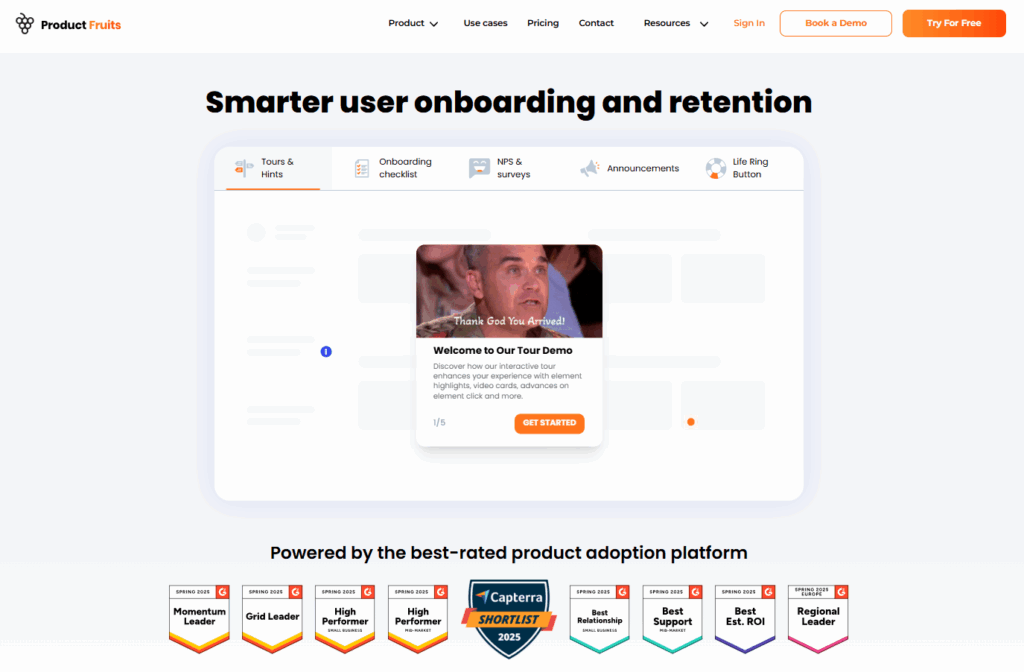
Strengths:
- Fast to stand up, non-technical teams can publish tours/checklists quickly.
- AI tools to generate onboarding content including multi-step tours
- Built-in targeting and “show when needed” patterns fit Phase-1 use cases.
Areas to improve/consider:
- Advanced orchestration/experimentation lives in higher tiers of the stack (yet still more affordable than most competitors)
- Mobile support currently covers only mobile web, iOS mobile support "coming soon".
Pricing:
#2: Userlane
Enterprise-grade DAP focused on step-by-step, on-screen guidance to reduce training and support friction.

Strengths:
- Strong interactive guides for “do this now” workflows, suited to setup paths.
- Emphasis on updating guides quickly as flows change.
Areas to improve/consider:
- Enterprise flavor can feel heavier than needed for simple Phase-1 checklists.
- Best value when paired with clear processes for ongoing guide maintenance.
Pricing:
#3: Pendo
In-app guides (walkthroughs, tooltips, embedded help) with guide metrics and quick no-code deploy.
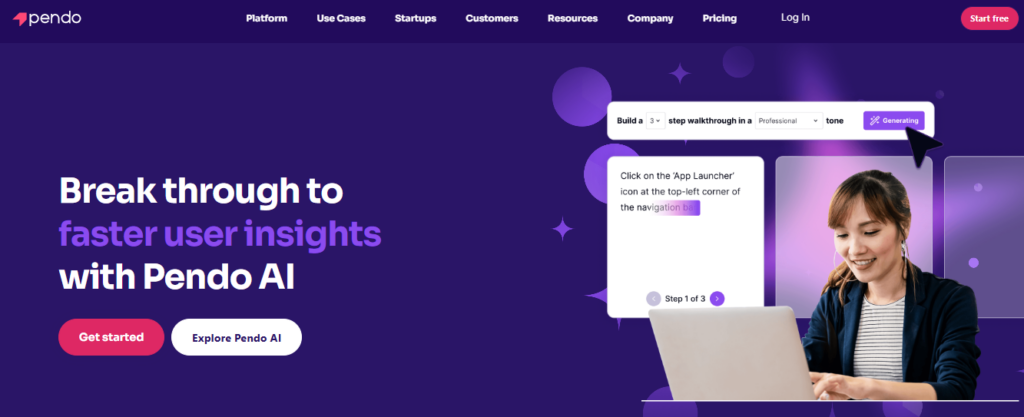
Strengths:
- Fast to publish guides and measure impact, good for “one core walkthrough.”
- Scales into deeper analytics if/when you need it.
Areas to improve/consider:
- As a broader platform, may require alignment with your event taxonomy to shine.
- Governance/styling conventions helpful to keep experiences consistent. Pendo.io
Pricing:
How to choose tips: For Phase 1, pick the tool your team can ship with fastest using your current events/segments. You can add orchestration or CDP-level targeting later without redoing the basics.
Personalized onboarding phase 2: Email nudges outside the app
This phase brings users back when they stall (stop using your app). This means you have to reach them with short, behavior-based messages outside the product -mainly email (plus in-app inbox or push for mobile). Each message should point to one next best step with a deep link.
Keep it light: 3–5 messages tied to missed milestones. Branch by role and plan (admins get setup nudges, end-users get first-task tips, trials get upgrade prompts). Write 60–120 words, one clear CTA.
What to send
– Welcome + quick win (Day 0–1): one action, deep link.
– Missed milestone (Day 3–5): “You’re one step from value - finish in 2 clicks.”
– Value reinforcement (Day 5–7): a tiny proof or GIF relevant to their role.
– Help offer (Day 7–10): 90-sec video or human assist. For trials, a timed conversion prompt.
Target from events (“no data connected in 72h”), add failover (no email open → small in-app banner next session), and respect consent, locale, and work hours. Cap frequency (e.g., max one/day, two to three/week) and suppress once the user completes the action.
Measure simple outcomes: return visits from messages, milestone completion after a nudge, trial→paid conversion, and unsubscribe/complaint rate.
• Quick setup checklist
– Map 3–5 messages to your key missed milestones per role/plan.
– Wire triggers from tracked events and set frequency caps/suppressions.
– Draft short copy with one CTA and a deep link.
– Launch with one A/B test, review weekly and prune anything noisy.
Best tools supporting personalized email onboarding
#4: ActiveCampaign
Marketing automation with robust behavior triggers and conditional content for tailored emails.

Strengths
- Many automation start triggers and conditional branching for journeys.
- Conditional content to vary blocks inside a single email by audience traits.
Areas to consider
- Works best when you’ve mapped clean events/attributes up front.
- Heavier branching can add maintenance - keep Phase-2 flows short.
Pricing:
#5: Customer.io
Event-driven “Journeys” across email, push, SMS, and in-app with fine-grained triggers.

Strengths
- Event/segment-based triggers and filters, clear enter/exit rules keep campaigns relevant.
- Supports multiple channels (email, SMS, push, in-app) plus webhooks/Slack from one workflow.
Areas to consider
- Best results when product events stream reliably.
- More power = more knobs. Start with 3–5 messages to avoid over-orchestration.
Pricing:
#6: Mailchimp
Familiar, accessible automation with “Customer Journeys” and behavioral targeting.
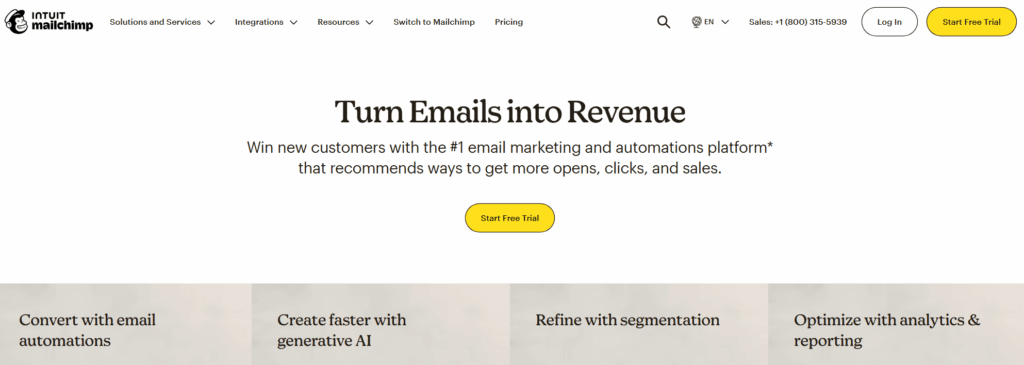
Strengths
- Behavioral targeting off app/site events, simple journey builders.
- Mature templates and deliverability for quick wins.
Areas to consider
- Less granular than developer-centric tools for complex product signals.
- Keep to a few event triggers in Phase 2 to minimize re-wiring later.
Pricing:
How to choose tips for phase 2: pick the tool that connects cleanly to your product events today and lets you build 3–5 behavior-triggered messages. You can usually layer deeper orchestration later.
Personalized onboarding Phase 3: In-app help and support
By now you’ve guided users inside the product and nudged them back when they stall. Phase 3 makes help findable at the exact moment of need - so fewer users leave to blindly search, open tickets, or give up. We put it at weeks 5-7, however if you do not have an existing help content (manuals, knowledge base or similar), you may task someone or create a small team to start working on such content right from the week 1, as building it up may take some time. Also, you may want to enable some of the in-app help features, such as help center linking to support chat and providing users with updates right from the week 1.
To not overwhelm yourself take “just-in-time, just-enough” approach. Modern onboarding and adoption platforms provide capable in-app help features as well as sufficient knowledge base capability, so use those. Some will even offer AI copilot that will answer user questions using this content.
What to include
- Targeted hints or tooltips and short feature tours or videos, triggered by role/situation (e.g. when user enters a specific section of menu).
- In-app help center providing each user with simple in-app access to help content* such as knowledge base and in-app support
- Contextual articles and/or 90-sec videos available in the knowledge base or other suitable location
- Smart search that understands feature names and synonyms - show top matches in KB first. Or even better, an AI copilot that can answer user questions and cover some of the support conversations (it can even be fine-tuned to address users in a specific tone or voice).
- Clear escalation: “Still stuck?” → open chat with a human or create a ticket with context attached.
- Work with analytics built in the tools listed below to see how your hints or feature tours are rated and how satisfied are users with your support content and/or smart search or copilot answers. Improve the content if needed.
* If you do not have it, you should start building a body of knowledge about your product, such as knowledge base. Make sure to review content you put in to make it up-to-date, correct and single source of truth.
Best tools for personalized in-app help and support
#7: Intercom
Help Center content inside the Messenger with searchable articles and AI for self-serve answers.
Strengths
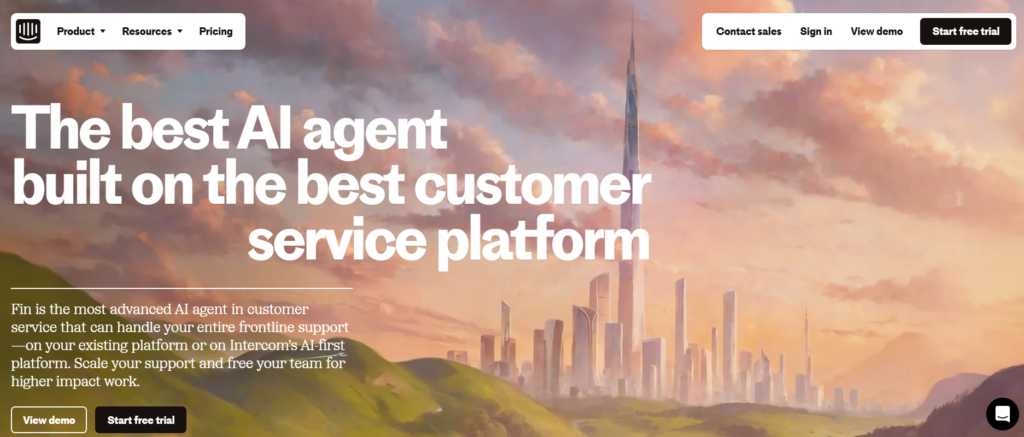
- Intercom is help and support-oriented,
- the in-app help center ties into Intercom’s suite and AI to deliver instant answers.
Areas to consider
- Broader platform, so keep the in-app panel lean to avoid overlap with other messages.
- Other onboarding-related features are covered better by some competitors
Pricing:
#8: Whatfix
Enterprise DAP with interactive walkthroughs and self help - a contextual help widget that recommends content on any screen.

Strengths
- Self Help provides in-app, context-aware answers and content aggregation.
- Strong focus on embedded, step-by-step guidance to cut friction.
Areas to consider
- Setup/governance can feel heavier for smaller teams, start on a few high-impact pages.
Pricing:
#9: UserGuiding
Guides, tooltips, and a Resource Center that surfaces articles, videos, and updates, now with an in-app AI assistant.
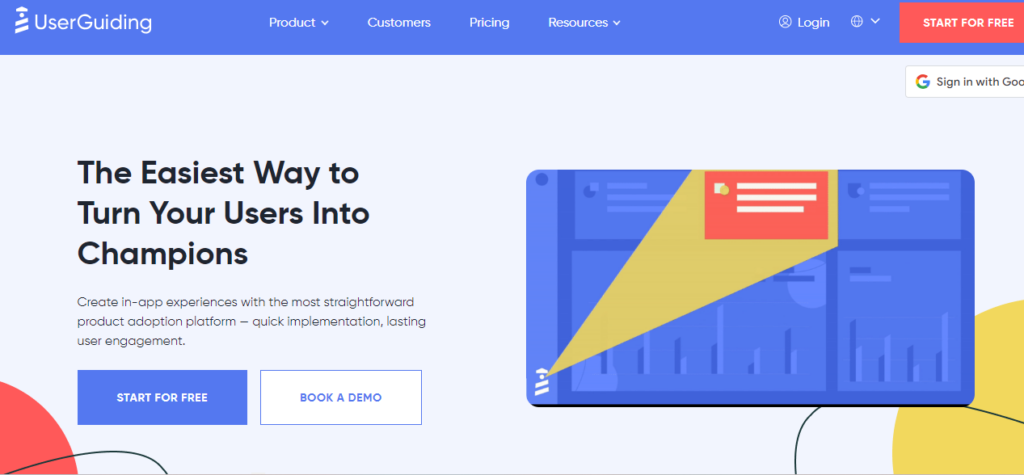
Strengths
- Resource Center consolidates help content and lets users search it in-app.
- AI-powered assistant can answer and route users without leaving the product.
Areas to consider
- For complex branching/targeting you’ll want clean event data first.
Pricing:
Extra tip: Product Fruits Copilot
Product Fruits offers great balance to cover both in-app obnoarding and help/self support: In-app tours, tooltips, checklists, plus a “Life Ring” help center with AI Copilot and AI search.

Strengths
- Life Ring puts a compact help hub on any screen, content is no-code and targetable.
- Copilot + AI search handle common questions inside the in-app help panel to deflect tickets.
Areas to consider
- Needs to connect to other solutions for advanced support chat and ticketing functionality.
Pricing:
How to choose tips for phase 3: Prioritize an embedded help panel (some possibility of targeting is a plus), look for smart search or (even better) an AI assistant to resolve common questions in place, and possibly guide launchers so users can act immediately.
Ongoing Personalized onboarding: the never-ending measurement and optimization
We have introduced key steps to start with personalized onboarding of your users in first three phases. However your work has just started, from now on you have ongoing duties, such as:
- Collecting feedback and




